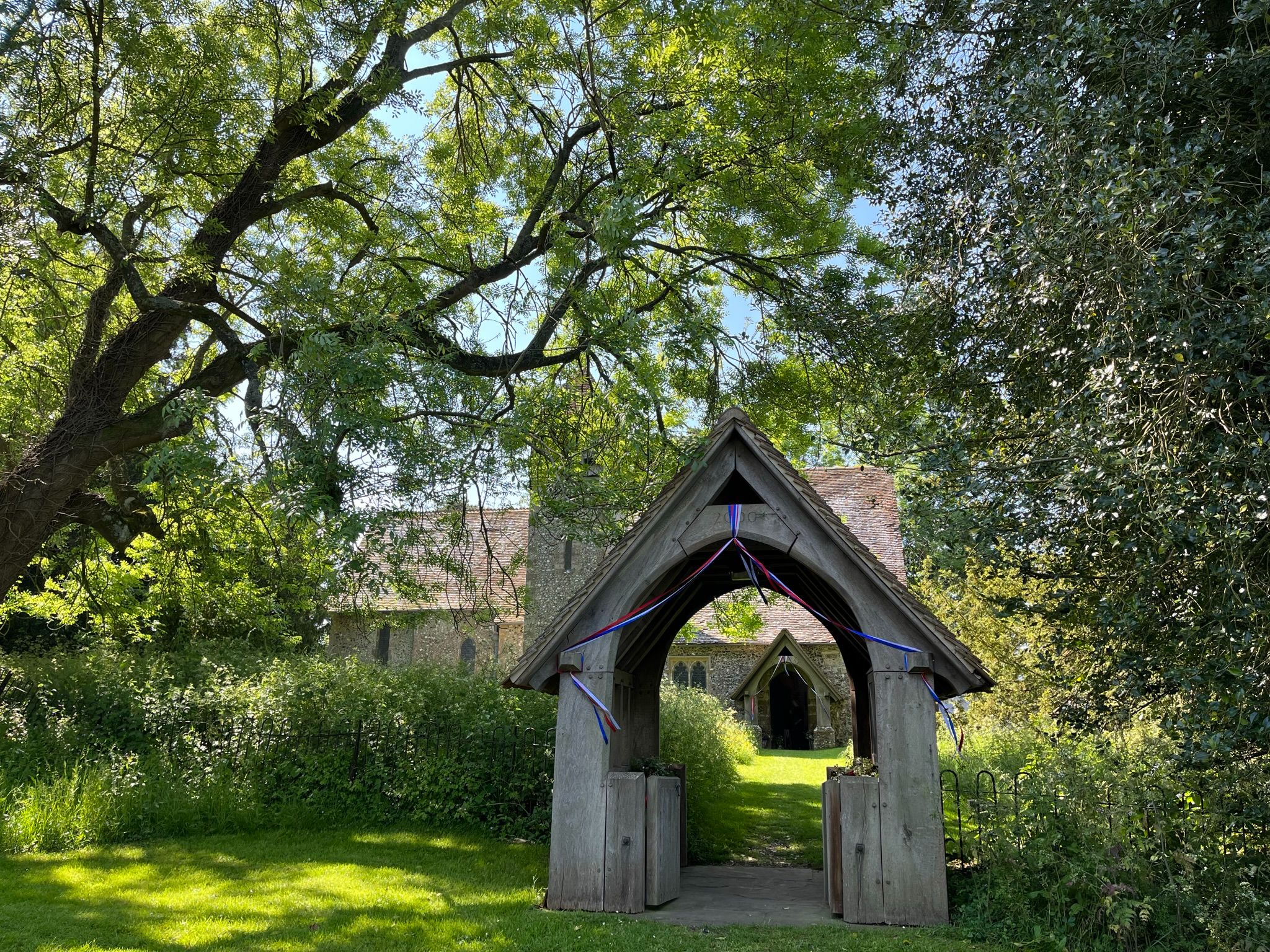Church History of St Mary's Stalisfield
Why was the church built?
St Mary’s church lies in an isolated position at the top of the North Downs. Why was it built and who did it serve given there are no houses around it?
When Edward Halsted came to Stalisfield in 1798 to survey the church for his Historical Survey of Kent, he was unimpressed. ‘The parish is an unfrequented and obscure place, situated in wild and dreary country…very barren, wet and flinty, and the inhabitants…are equally poor,’ he lamented. His report provided no clues as to why the church was built in the first place. So here are two alternative theories for you to consider:
- The church was built as part of the manorial estate of Stalisfield Manor with Court Lodge Farm and was built to serve the owners of the estate and its workers. The estate is situated on an ancient droving route that leads into Faversham – an important town following the Norman Conquest. The manor house has since burnt down.
- Perhaps the church was originally surrounded by a small village. This may have been moved to its current location on Stalisfield Green because of the Great Plague – a number of villages were burnt down at this time as ‘pestilential air’ was considered to be the cause of the Plague. Churches were considered to be safe because they were protected by God.
The original door on the south side of the church has been bricked up. Is this because it was no longer needed to provide access from the manor or because the village was moved? Which explanation do you think is most likely?
A Description of the Building
The main body of the church was built in Norman times with some later additions but there may well have been an even earlier building. It is simple in form but, unusually, it is composed of two-bay arcades out of synch with one another. It is believed to have been built in the thirteenth century but features later additions such as a Victorian rood screen, and a Resurrection window designed by A.L. Moore in 1911. There are steps to the left of the rood screen that may have been put in place to clean it. The screen was one of a set of four built for local churches. The small north tower is medieval in origin, but its timber belfry was designed in 1901 by Hubert Benstead. It carries a weathervane dated 1904. A major restoration of the church was carried out around 1879-80 - by Joseph Clarke. In our own times, the lych-gate was added to celebrate the Millennium.
While each generation has added its own imprint to the church, History has also left its mark in a stained-glass window memorialising those who gave their lives in the two world wars from the Stalisfield community. To the left of the altar, is a small medieval window. The bottom section had been broken or destroyed ( since repaired ) probably during the Reformation when such decorations were seen as sinful signs of Papacy. The remaining top section appears to depict an apse, or side church, perhaps showing the relationship of this church to See of Canterbury.
St. Mary’s Church is mentioned in the Domesday Survey of 1080, but the parish had already been in existence for some time before then. At the Norman Conquest, it was given to Odo, the notorious Bishop of Bayeux, but, when he was disgraced, it passed to the Priory of St Gregory at Canterbury. By all accounts, these monks were little better than the Odious Odo, being accused of fornication, theft, and gluttony. Clearly, they lived well and didn’t concern themselves too much with the practice of their religious duties since they didn’t even have a bell to call the monks into worship and on the rare occasions when they did show up to service, they were incapable of singing in tune. Most heinously of all, they were charged with serving bad beer. Stalisfield Church is said to have had a little monk’s sleeping nook at the back of the building (where the kitchenette is now). Was this reserved for particularly badly behaved monks sent to endure cold, wet and windy Stalisfield as a punishment? Or did some more sincere monk eke out his days there in mortification of the flesh for the sins of his brothers?
From war heroes to badly-behaved monks, the struggling farmers of Stalisfield must have shrugged their shoulders at the vagaries of national politics. Some of the lands surrounding the church, were kept to support the poor, allowing families to scratch out meagre existences on the poor soil of these smallholdings. Ownership of the church passed from the profligate monks to the stern, Puritanical officers of Cromwell, but in Stalisfield little changed, other than the occasional loss of men caught up in wars. The windows depict the great and small things of their lives: the Crucifixion – the great symbol of sacrifice and hope for the community, the shepherd – symbolising care of the strong for the weak. The thick walls of the church keep the wind out but the cold in. Damp as it was, many generations of children, twisting with impatience at the length of the sermons, must have felt caught and protected in that circle of life celebrated in the body of the church through the community’s births, marriages and deaths.




